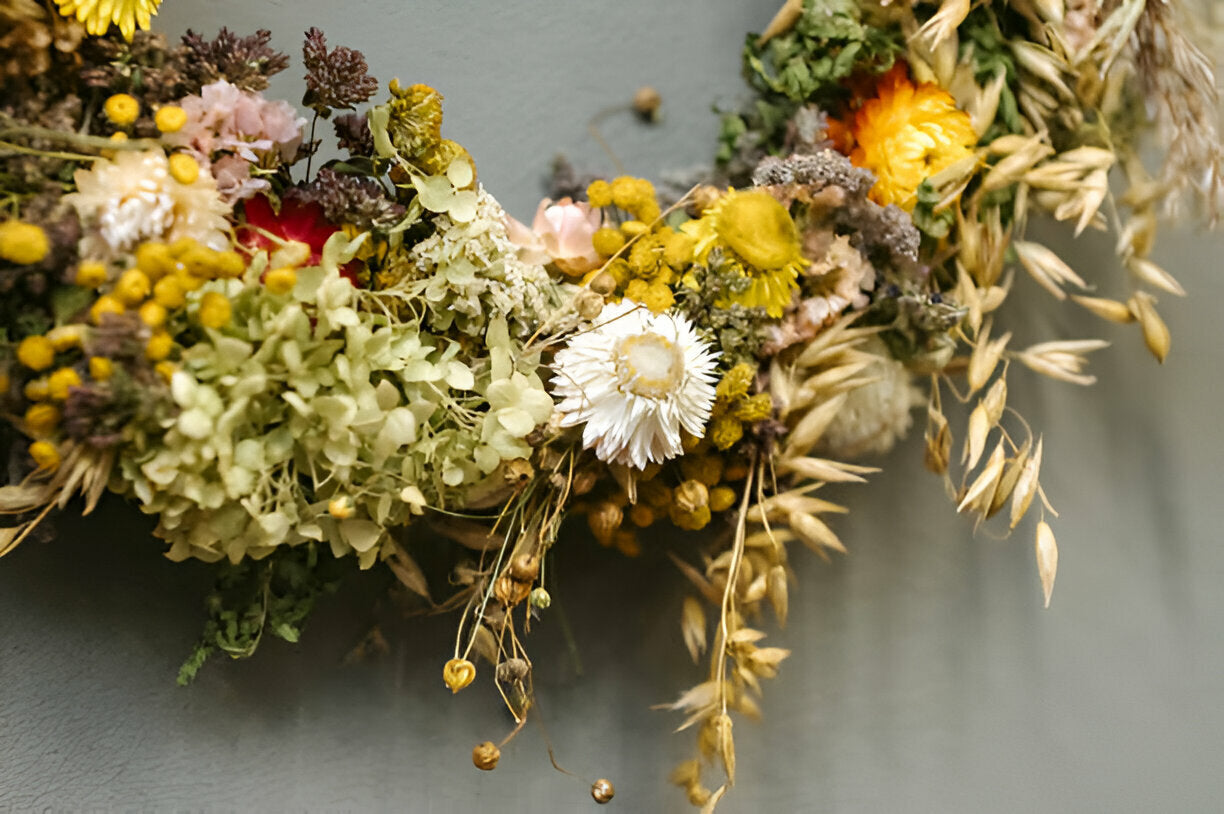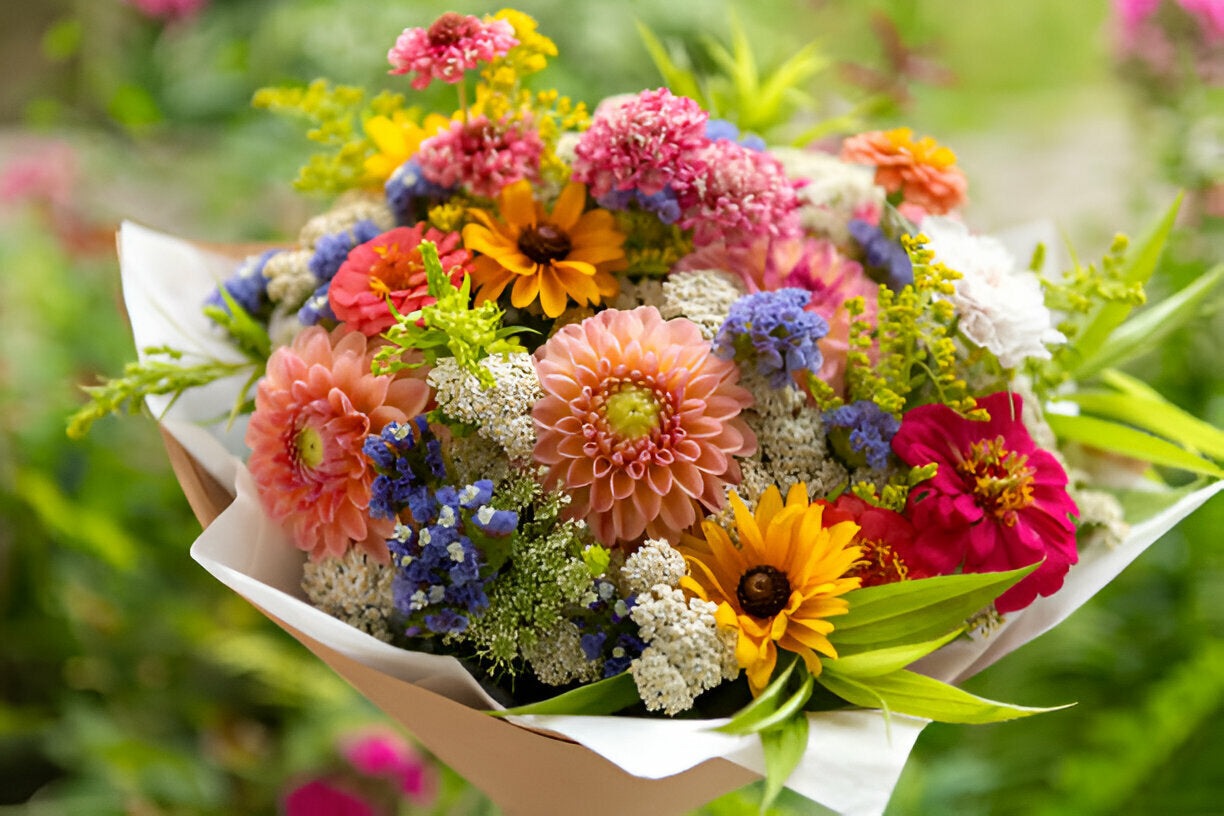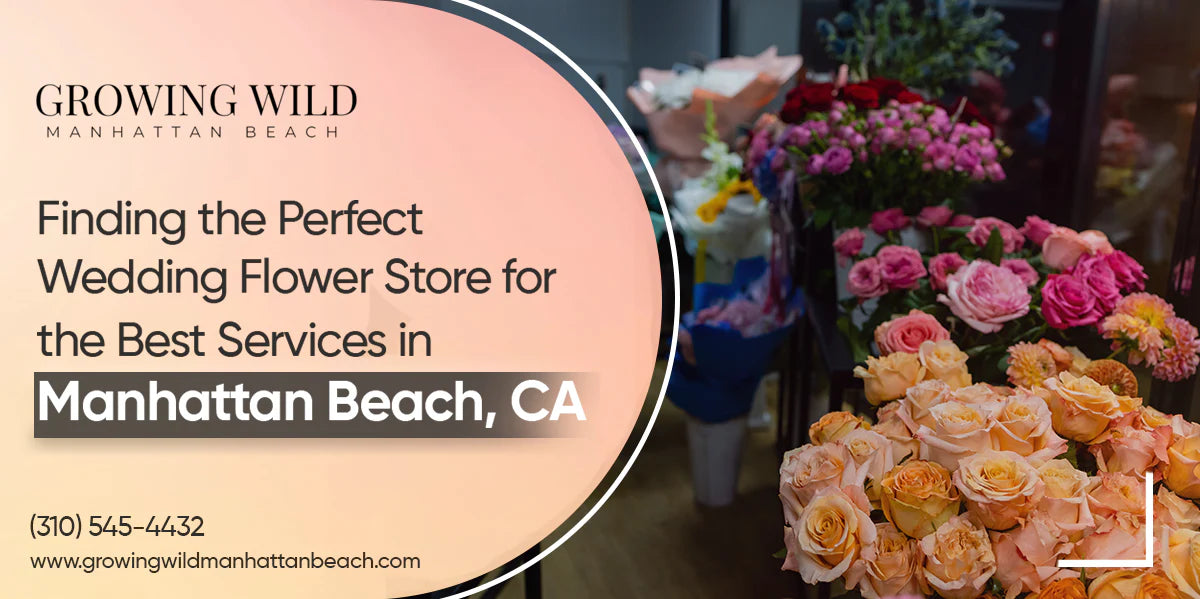
How To Care For Dried Flowers?
Table of Contents
-
{# JavaScript will populate this list dynamically #}
- Generating Table of Contents...
Dried flowers have a way of capturing time in their delicate petals. Unlike fresh blooms that fade within days, these preserved treasures can bring beauty to your home for months or even years. The global dried flower market is valued at USD 135 million in 2023 and is expected to grow at a 5.20% annual rate through 2030. More people are discovering the joy these long-lasting botanicals bring to homes and special occasions.
If you’ve received a dried arrangement as a gift, bought one for yourself, or tried drying flowers at home, you might wonder how to keep them looking their best. The good news is that with a little knowledge and care, your dried blooms can continue to delight far longer than you might expect.
What are Dried Flowers?
Dried flowers offer the perfect balance of natural beauty and longevity. By removing moisture through various preservation methods, these botanicals can maintain their structure and much of their color while lasting far longer than fresh flowers.
Types of Dried Flowers
Not all dried flowers are created equal. The method used to preserve them affects both their appearance and how long they'll last in your home:
-
Air-dried: The traditional method that most people try at home, resulting in slightly shrunken blooms with deeper, more vintage colors
-
Silica gel-dried: These maintain more of their natural shape and vibrant colors, creating a more lifelike appearance
-
Freeze-dried: The premium preservation method that keeps the most natural appearance and color fidelity
-
Pressed flowers: Flattened specimens perfect for framing or crafting delicate keepsakes
-
Glycerin-preserved flowers: Technically not dried but preserved with a solution that maintains a soft, flexible texture
Best Flowers for Drying
While most flowers can be dried, some varieties naturally perform better than others, maintaining their shape and color during the preservation process:
|
Flower Type |
Drying Quality |
Longevity |
Best Uses |
|
Lavender |
Excellent |
1-3 years |
Bunches, sachets, wreaths |
|
Roses |
Very Good |
1-2 years |
Arrangements, shadowboxes |
|
Hydrangeas |
Excellent |
2-3 years |
Statement pieces, wreaths |
|
Statice |
Excellent |
3+ years |
Colorful accents, filler |
|
Baby's Breath |
Very Good |
1-2 years |
Delicate filler, wedding decor |
|
Eucalyptus |
Good |
1-2 years |
Greenery, wreaths, garlands |
|
Strawflowers |
Excellent |
3+ years |
Bold colors, structured designs |
|
Globe Amaranth |
Excellent |
2+ years |
Round accents, color pops |
Lifespan Expectations
One of the greatest joys of dried flowers is their impressive staying power. With proper care, most arrangements remain attractive for 1-3 years, with some varieties lasting even longer. According to a survey by the American Dried Flower Association, this makes them nearly 24 times more economical than fresh flowers over time—a wonderful benefit for both your wallet and the environment.
10 Ways to Care for Dried Flowers
Taking proper care of your dried flowers doesn't have to be complicated. With these ten simple but effective techniques, you can significantly extend the life and beauty of your arrangements. Each method addresses a specific aspect of preservation, from environmental factors to handling practices and maintenance routines.
1. Find the Perfect Spot
Where you display your dried flowers dramatically affects how long they'll maintain their beauty:
-
Avoid direct sunlight: UV rays are the enemy of dried flowers, causing colors to fade quickly. Place arrangements away from windows with direct sun exposure or behind sheer curtains that filter harsh light.
-
Keep away from moisture sources: Bathrooms, kitchens, and humid areas can cause dried flowers to absorb moisture and develop mold. Opt for drier rooms like living areas, bedrooms, or hallways instead.
-
Shield from strong airflow: Locations near air vents, fans, or frequently opened doors can cause delicate petals and stems to break. Choose spots with minimal air disturbance.
-
Maintain stable temperatures: Extreme temperature fluctuations can damage dried flowers. Avoid placing them near radiators, heaters, air conditioners, or drafty windows.
Finding that perfect spot might take a little thought, but your dried flowers will reward you by maintaining their beauty much longer.
2. Master Gentle Cleaning Techniques
Over time, dust will naturally settle on your dried flowers, diminishing their beauty and potentially causing damage if left unchecked. The key is knowing how to remove this dust without harming the delicate structures of your preserved blooms. These carefully tested cleaning methods will help maintain your arrangement's appearance without causing breakage or color loss.
-
Air dusting: For light dust, use a hair dryer on the coolest, lowest setting, keeping it at least 10-12 inches away from the arrangement. This gentle airflow removes surface dust without damaging delicate petals.
-
Feather dusting: A soft feather duster can gently remove dust from sturdier varieties like strawflowers, statice, or preserved eucalyptus. Use extremely light strokes moving from top to bottom.
-
Preservation spray: After cleaning, a light mist of dried flower preservation spray (available at craft stores) can help maintain color and provide some protection against future dust.
Remember that over-cleaning can damage dry flowers, so it's best to clean them only when necessary, typically every 1-2 months depending on your home's dust levels.
3. Practice Careful Handling
Dried flowers are significantly more fragile than their fresh counterparts, with stems and petals that can snap or crumble with the slightest pressure. When you need to relocate your arrangement or adjust its position, how you handle the flowers will determine whether they remain intact or suffer damage. These handling techniques will help preserve the integrity of even the most delicate dried specimens.
-
Support the base: Always hold arrangements from the bottom, supporting the vase or container with one hand and gently steadying the arrangement with the other.
-
Avoid squeezing: Dried stems are brittle and can snap easily when compressed. Handle them lightly, allowing space between your fingers.
-
Move slowly: Quick movements can cause air currents that damage delicate parts. Take your time when relocating arrangements.
-
Consider humidity: Handle dried flowers on low-humidity days when possible, as they're more brittle when the air is extremely dry.
4. Manage Sunlight Exposure
Light is perhaps the greatest enemy of dried flower longevity, with UV rays gradually breaking down the natural pigments that give your arrangements their beautiful colors. According to a study by the Botanical Preservation Society, direct sunlight can fade dried flower colors by up to 80% within just three months. Protecting your flowers from excessive light exposure requires thoughtful placement and sometimes additional protective measures.
-
Use UV-filtering glass: If you love the look of dried flowers near windows, consider UV-filtering glass or applying UV-protective film to your windows.
-
Rotate arrangements: If some light exposure is unavoidable, rotate your arrangement a quarter turn weekly so fading occurs more evenly.
-
Consider darker locations: Hallways, mantels away from windows, and interior walls make excellent display spots that limit sun exposure.
-
Use display cases: Glass-enclosed display cases can provide additional protection while still showcasing your beautiful arrangements.
5. Control Humidity Levels
Dried flowers have had their moisture content intentionally removed through the preservation process, which means they're particularly sensitive to environmental humidity. Too much moisture in the air can cause them to absorb water and develop mold, while extremely dry conditions can make them brittle and prone to breakage. Finding and maintaining that perfect balance is essential for long-term preservation.
-
Ideal humidity range: 40-50% relative humidity provides the perfect balance—dry enough to prevent mold but not so dry that flowers become overly brittle.
-
Dehumidifiers: In naturally humid climates or seasons, a dehumidifier in the room with your arrangements can help maintain optimal conditions.
-
Avoid bathroom displays: While dried flowers look beautiful against bathroom tiles, the frequent humidity changes will significantly shorten their lifespan.
-
Monitor seasonal changes: Be especially vigilant during humid summer months or when using humidifiers during dry winter periods.
6. Protect from Household Activity
Even the most carefully preserved dried arrangement can be instantly damaged by an accidental bump, a curious child's exploration, or a pet's playful investigation. Creating a safe environment for your dried flowers involves strategic placement and sometimes physical barriers that allow their beauty to be appreciated without putting them at risk of contact damage.
-
Elevated placement: Keep dried arrangements on high shelves or mantels away from children's reach and curious pets.
-
Clear boundaries: Gently teach children that dried flowers are "look but don't touch" decorations.
-
Pet considerations: Be aware that some cats are particularly attracted to dried grasses and flowers. Wall-mounted or covered displays may be necessary for dedicated pet owners.
-
Display cases: For especially precious arrangements, consider glass cloches, shadow boxes, or display cases that allow viewing while preventing accidental damage.
7. Refresh Fading Colors
Even with perfect care, dried flowers will eventually begin to lose some of their vibrant color over time. Rather than replacing the entire arrangement, there are several methods to rejuvenate and enhance the colors of your beloved dried blooms. These techniques can breathe new life into arrangements that have begun to look a bit tired or faded.
-
Dried flower spray: Specialty color-enhancing sprays designed specifically for dried botanicals can refresh faded hues. Test on a small, hidden area first.
-
Floral craft paint: For larger dried flowers like hydrangeas or sunflowers, extremely diluted floral craft paint applied with a fine brush can restore color to petal edges.
-
Strategic replacements: Sometimes the best approach is to replace only the most faded elements while keeping the remainder of the arrangement intact.
8. Make Structural Repairs
Accidents happen, and even the most carefully maintained dried flower arrangement might suffer broken stems, crumbled petals, or other structural damage over time. Rather than discarding the entire arrangement, targeted repairs can often restore functionality and appearance. These repair techniques allow you to salvage damaged arrangements with minimal visible evidence of the fix.
-
Floral wire support: Thin floral wire carefully wrapped around broken stems can provide invisible support.
-
Floral glue: Special floral adhesives can repair small breaks without leaving visible residue.
-
Strategic trimming: Sometimes removing damaged portions and rearranging the remaining elements creates an entirely new look.
9. Enhance the Fragrance Experience
One aspect of dried flowers that often diminishes first is their natural fragrance. While the visual beauty remains, the lovely scents of roses, lavender, or eucalyptus typically fade within weeks of drying. For those who miss this sensory element of fresh flowers, there are several gentle methods to reintroduce beautiful aromas to your dried arrangements without damaging the delicate blooms.
-
Essential oil refreshing: A few drops of essential oil diluted in water and misted near (not directly on) arrangements can provide a complementary scent.
-
Dried flower sachets: Tuck small sachets of naturally fragrant dried lavender or herbs behind arrangements to create a subtle scent aura.
-
Scented wax melts: Placing a similarly scented wax melt near (but at a safe distance from) your dried arrangement creates the impression of fragrant flowers.
10. Refresh with Seasonal Updates
Unlike fresh arrangements that need a complete replacement, dried flower displays can be rejuvenated and reimagined with seasonal adjustments. By making thoughtful additions, subtractions, or modifications to your existing arrangements, you can keep them feeling fresh and appropriate throughout the year without starting from scratch. This approach maximizes your investment while ensuring your decor always feels current.
-
Add seasonal elements: Incorporate small seasonal accents like miniature pine cones for winter, dried lavender for spring, wheat for summer, or preserved autumn leaves for fall
-
Update containers: Switch out vases or containers seasonally while keeping the dried arrangement intact
-
Reposition arrangements: Move dried displays to different locations in your home to create a fresh visual impact
-
Incorporate ribbon or fabric accents: Add seasonal color with simple ribbon changes or fabric wraps
-
Layer with fresh elements: For special occasions, incorporate a few fresh flowers among the dried for a hybrid arrangement
-
Adjust lighting: Change how arrangements are lit seasonally—warmer, cozier lighting for fall/winter, brighter positioning for spring/summer
-
Group differently: Create seasonal vignettes by grouping dried arrangements with seasonal decor items
Seasonal Display Ideas
One of the joys of dried flowers is their versatility throughout the year. Here are some seasonal inspiration ideas to keep your displays fresh and relevant:
Spring and Summer Showcasing
Bright, cheerful displays that highlight the vibrancy of warmer months:
-
Pastel palettes: Group lighter-colored dried flowers like pale pink roses, lavender, and white baby's breath for spring freshness.
-
Garden-inspired arrangements: Combine dried wildflowers, daisies, and grasses in rustic containers for summer charm.
-
Wreath transitions: Update door or wall wreaths with seasonal ribbons—light blues and greens for spring, bright yellows, and oranges for summer.
Fall and Winter Transformations
Warmer, richer displays that complement cooler months:
-
Autumn color infusion: Add dried orange and red maple leaves, wheat stalks, or preserved oak leaves to existing arrangements.
-
Holiday adaptations: Incorporate pine cones, cinnamon sticks, or preserved holly berries for winter holiday themes.
-
Metallic accents: A light touch of gold or silver spray on select elements can create a festive seasonal sparkle for special occasions.
Bottom Line
Caring for dried flowers is both an art and a simple practice of mindfulness. By understanding their needs and providing the right environment, you can enjoy these preserved botanical treasures for years rather than days. Unlike their fresh counterparts, dried flowers don't demand daily attention just thoughtful placement and occasional gentle care.
The next time you admire a beautiful dried arrangement, remember that proper care can keep it looking its best for years.
Some flowers deserve to last forever. Growing Wild Manhattan Beach preserves those flowers’ beauty and brings timeless blooms into your home. A perfect way to hold onto nature’s charm or share it with someone special.


